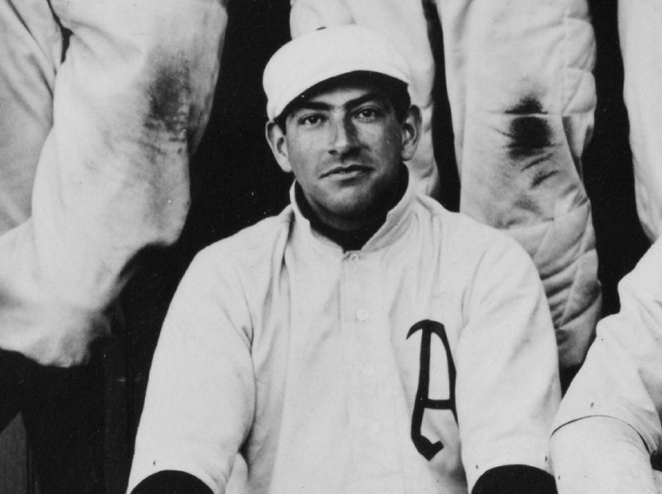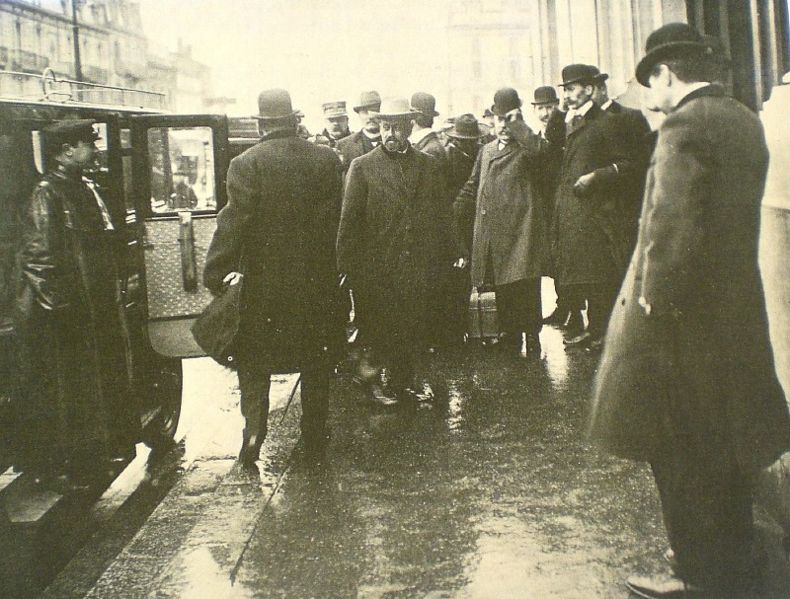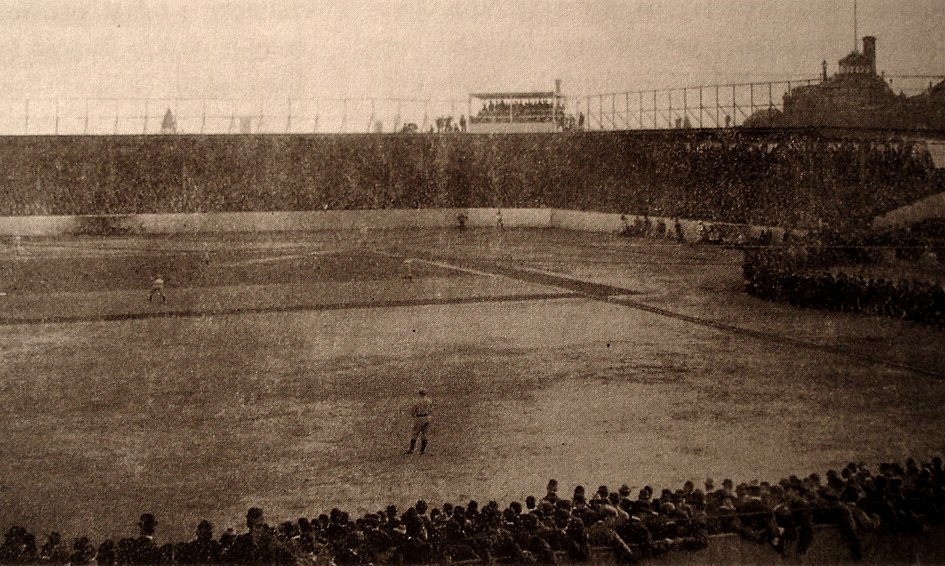Circumstance played a vital role in offering the first Latino an opportunity in professional, modern baseball. On the first day of the 20th century, a Washington D.C. newspaper, the Evening Star, ran the following headline headline: “On the Warpath: American League Declares Hostilities on the National Organization.” The article stated that baseball’s newly named American League sought to compete with the established National League by breaking the sport’s first national agreement and “[deciding] to declare war” on them. The national agreement was a pact between rival baseball leagues calling for the mutual respect of each league’s players and their contracts. When the upstart American League refused to honor and respect the National League’s contracts with their players, and labeled themselves as a professional rather than a minor league, they signed away some of the rival league’s best players by luring them away with higher pay. The most impactful signee was Nap Lajoie who besides being part of the second class inaugurated into Baseball Hall of Fame (behind baseball immortals like Babe Ruth, Ty Cobb, and Honus Wagner), he was also the “first superstar in American League history.”
Lajoie switched teams within the same city, going from the National League’s Philadelphia Phillies to its American League counterpart, the Philadelphia Athletics. The National League did not stand idle as the American League signed away their best player. Instead, they took their fight to the courtrooms and before the start of the 1902 season, the Phillies owner sued to regain Lajoie’s services. After several appeals, the Supreme Court of Pennsylvania ruled Lajoie’s contract was only effective in the state, meaning that within Pennsylvania, he must either play for the Phillies or no one else. The American League’s executives, intent on keeping its most important player, convinced the Athletics management to trade Lajoie to Cleveland. The American League kept Lajoie but the Philadelphia Athletics lost their second baseman. This is how Luis Manuel Castro came to play for the Athletics.

In 1902, Castro became the first Latino player in baseball’s modern era, and the first to play in what is now Major League Baseball. Born to a wealthy family in 1876 in Medellin, Colombia, Castro and his family moved to the United States due to their home country’s political instability. Castro was 8 years old when he arrived in the United States by boat and settled in New York. He started playing baseball at 17 years old, and was a member of the Manhattan College team, followed by various stops across multiple minor league teams. One the eve of the 1902 season, the Philadelphia Athletics and their legendary manager Connie Mack offered Castro a try-out and eventually signed him to help with Lajoie’s departure.
Despite Castro’s inability to replace Lajoie’s productivity—few in baseball history could—he still contributed to the Athletics winning the 1902 American League pennant. For a player that only played less than half the season, Castro’s likeability earned him an opportunity to make a speech and celebrate at the team’s year-end banquet. There, Castro gave an acceptance speech on behalf of the players before management gave them a watch with a “gold insignia of a [baseball] diamond and bats crossed.” As part of the festivities, Castro even sang in Spanish.
In 1902, Castro became the first Latino player in baseball’s modern era, and the first to play in what is now Major League Baseball.
Castro’s short Major League career—only lasting 42 games in the 1902 season where he batted for a .245 average—may contribute to him not being viewed with the same reverence as another pioneer: Jackie Robinson, who broke baseball’s color line in 1947. While Robinson was a Hall of Fame-caliber player, and Castro was clearly not, there are other reasons for the latter not receiving the same credit as his fellow trailblazer.
There is a mystery clouding Luis Manuel Castro’s history. Some baseball historians have called Castro, “the last, great untold story of baseball,” while others have even questioned Castro’s status as a baseball pioneer since he, later in life, listed New York City as his birthplace. Various accounts also list Castro by different names. In fact, newspapers rarely used his birth name, “Luis,” and he’s instead referred to by the Anglo version, Louis and the shortened Lou. Years later, while filling paperwork for United States citizenship, Castro filled out the application as “Louis Michael Castro.” In other cases, his nicknames (Judge, Judd, Jud, and Count) identify Castro without ever using his given name. In his later playing days, teammates even called Castro, the “President of Venezuela”—noting his relationship with Venezuelan President Cipriano Castro. Whether he was the president’s nephew is also unknown, as he claimed a familial relationship but, at other times, also denied one, possibly influenced by Cipriano Castro increasingly becoming dictatorial while president of Venezuela.

Besides possibly being a relative of the Venezuelan President, all the uncertainty involving Castro points to a bigger problem within baseball: their strict desire to keep the color barrier that resulted in contradictory application for Latinos. The result of baseball’s segregationist policies was Latinos straddling baseball’s color line.
Following the American Civil War, African-Americans played on white baseball teams. It wasn’t until 1890 that the so-called “gentleman’s agreement” between owners barred black players from baseball’s white professional and minor leagues. Influenced by Jim Crow laws, the one-drop rule determined who was black. But as Latinos’ position within the United States’s white-black racial spectrum has long been unclear, owners determined their place along the racial hierarchy of baseball on a case-by-case basis. In short, baseball allowed Latinos to play baseball not strictly based on their ability to pass for white, but more so on them not being confused with being black. As Adrian Burgos Jr., writes in Playing America’s Game, team officials “possessed the power to construct whatever racial categories they deemed necessary to distinguish between blacks and other nonwhites while still maintaining a color line that excluded [African-Americans].”

Castro fit the criteria of Latinos allowed to play. He was comparatively light-skinned and came from his country’s elite; most Latinos that played baseball during that time hailed from the upper-class, learning the sport in United States schools. That narrative also fits into the history of using baseball as a civilizing sport. Newspapers often emphasized Castro’s European roots, noting he was of “Spanish descent.” Therefore, by changing his name to whatever variation or nickname he used, Castro could play without threatening the sport’s color line. Conversely, the same choice was not available to Afro-Latinos, and those who wanted to play professionally had to join the Negro Leagues, where they made up “about 10 to 15 percent” of the rosters. Similarly, African-American players banned from professional baseball in the United States found employment in the integrated Latin American leagues across the Caribbean and Mexico.
Players like Castro may not have broken the color line, but they certainly bent it.
Being that Castro wasn’t considered black, he likely didn’t face the same harassment as Jackie Robinson and even Minnie Miñoso; a Cuban baseball player who in 1951 became the first Afro-Latino to play in the integrated major leagues. And yet, to a certain extent, whether they intended to or not, Castro and other Latinos that played during baseball’s segregated era helped integrate the sport. Players like Castro—and many Native Americans who also have a rich baseball history and like Latinos, did not easily fit a racial category—may not have broken the color line, but they certainly bent it.
After Castro’s baseball playing career ended, he became the first Latino to “manage a club in Organized Baseball.” Incidentally, at the start of the 2017 season, a year after Adrián González began a push to reclaim part of the Latino identity by including accents on last names, there was only one Latino manager (Rick Renteria with the Chicago White Sox) and one Latino general manager (Al Avila with the Detroit Tigers). While Latinos make up nearly 32% of Major League rosters, they only account for 0.03% of all managerial positions—a problem that for years, many, including baseball’s commissioner, have noted but one that continues nonetheless. It also lends credence to Baltimore Orioles center fielder Adam Jones’s assessment that “baseball is a white man’s sport.”
Jones’s claim comes 115 years after players like Luis Manuel Castro—who died, broke, while in a psychiatric center in 1941, at the age of 64—essentially had to downplay their heritage to fit into a sport that wasn’t ready or willing to accept someone who didn’t pass for “white.”







